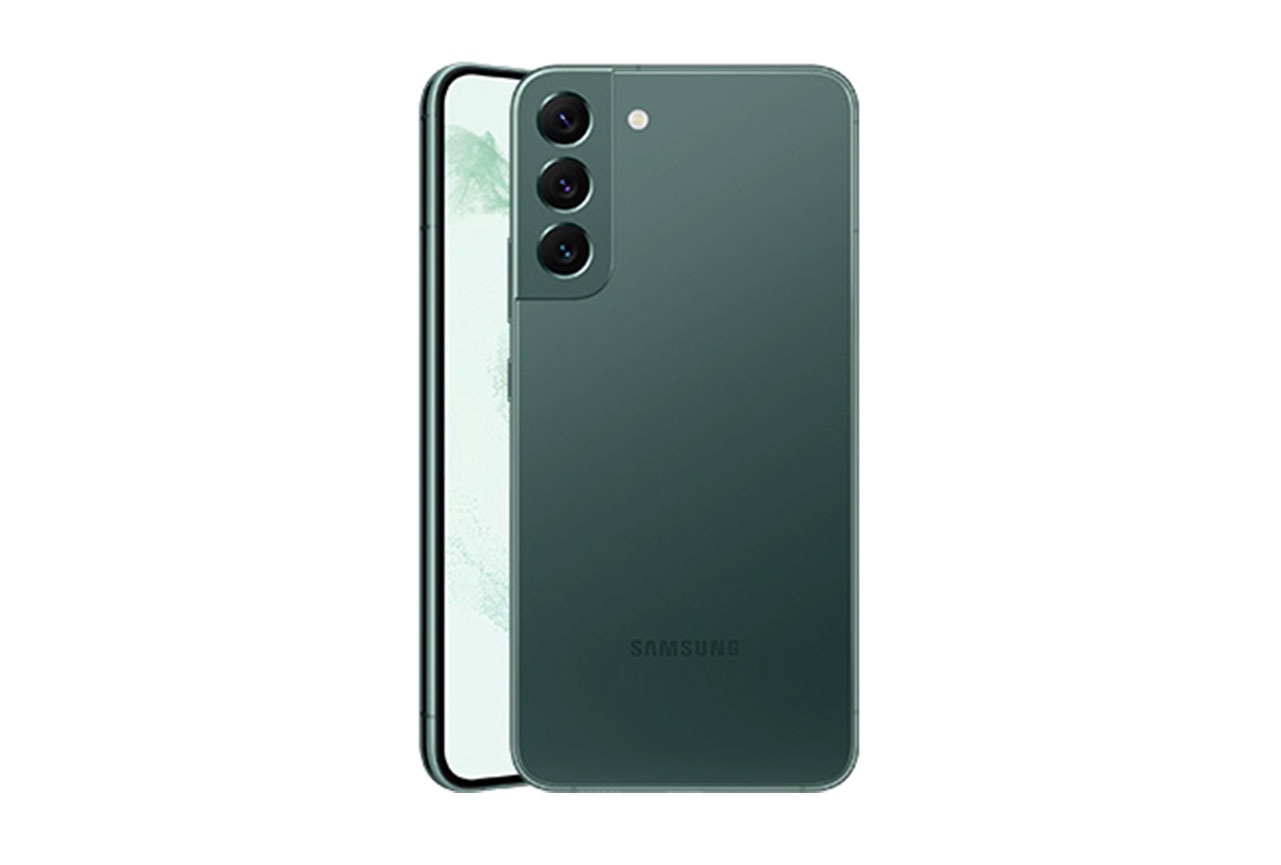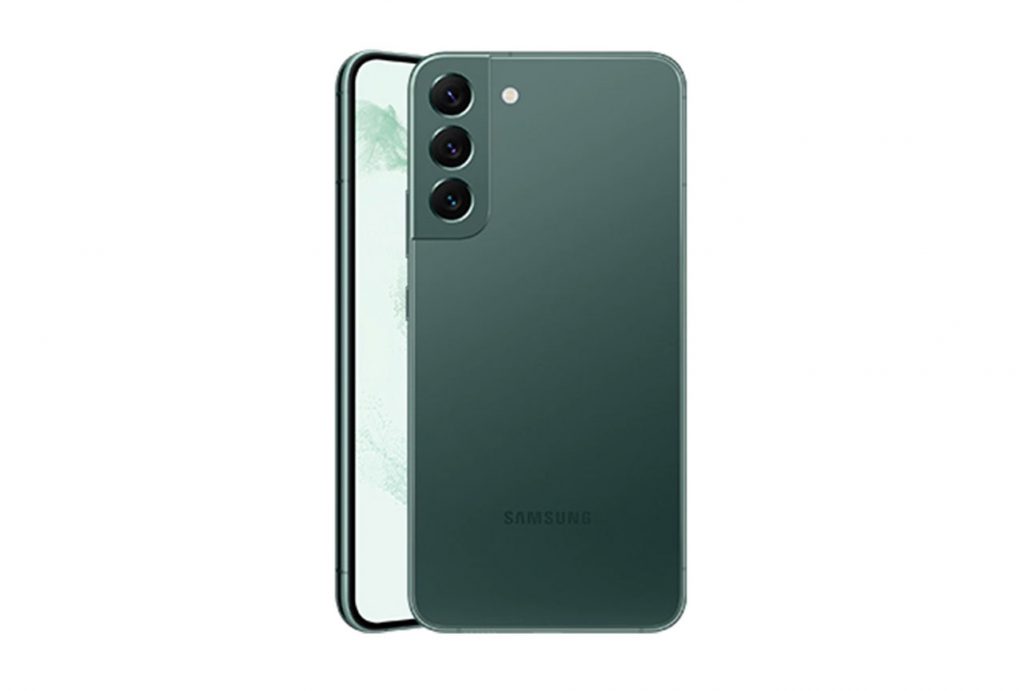The Samsung Galaxy S22+ (Exynos) is the middle model in the Korean company’s 2022 top-end S-series, and it uses the same Exynos 2200 chipset as the flagship S22 Ultra. Like the S22, the S22+ uses a smaller and lower-resolution display than the S22 Ultra, and it doesn’t offer the larger device’s S-Pen stylus.
Key camera specifications:
- Primary: 50 MP 1/1.56″ sensor, 1.0μm pixels, 85-degree field of view, f/1.8-aperture lens, OIS, Dual Pixel AF
- Ultra-wide: 12MP 1/2.55″ sensor, 1.4μm pixels, 120-degree field of view, f/2.2-aperture lens, Dual Pixel AF
- Tele: 10MP 1/3.94″ sensor, 1.0μm pixels, 36-degree field of view, f/2.4-aperture lens, 3x optical zoom
- 8K up to 24fps, 4K up to 60fps, 1080p at 60fps (tested at 4K/30fps)
- HDR10+ video (available as an option turned off by default in advanced video recording settings, not tested)
About DXOMARK Camera tests: For scoring and analysis in our smartphone camera reviews, DXOMARK engineers capture and evaluate over 3000 test images and more than 2.5 hours of video both in controlled lab environments and in natural indoor and outdoor scenes, using the camera’s default settings. This article is designed to highlight the most important results of our testing. For more information about the DXOMARK Camera test protocol, click here. More details on how we score smartphone cameras are available here.
Test summary
Scoring
Sub-scores and attributes included in the calculations of the global score.
 Samsung Galaxy S22+ (Exynos)
Samsung Galaxy S22+ (Exynos)

125
camera
105
Huawei Pura 70 Ultra
Best: Huawei Pura 70 Ultra (130)
111
Apple iPhone 16 Pro
Best: Apple iPhone 16 Pro (130)
97
Huawei Pura 70 Ultra
Best: Huawei Pura 70 Ultra (125)
97
Xiaomi 15 Ultra
Best: Xiaomi 15 Ultra (125)
78
Huawei Pura 70 Ultra
Best: Huawei Pura 70 Ultra (117)
65
Xiaomi Redmi 12 5G
Best: Xiaomi Redmi 12 5G (82)
75
Huawei Pura 70 Ultra
Best: Huawei Pura 70 Ultra (85)
66
Apple iPhone 16 Pro
Best: Apple iPhone 16 Pro (93)
90
Xiaomi 15 Ultra
Best: Xiaomi 15 Ultra (128)
97
Huawei Pura 70 Ultra
Best: Huawei Pura 70 Ultra (122)
95
Oppo Find X8 Pro
Best: Oppo Find X8 Pro (116)
100
Oppo Find X8 Pro
Best: Oppo Find X8 Pro (120)
102
Huawei Pura 70 Ultra
Best: Huawei Pura 70 Ultra (120)
105
Oppo Find X6 Pro
Best: Oppo Find X6 Pro (118)
102
Apple iPhone 16 Pro
Best: Apple iPhone 16 Pro (120)
74
Xiaomi 12S Ultra
Best: Xiaomi 12S Ultra (86)
108
Apple iPhone 16 Pro
Best: Apple iPhone 16 Pro (119)
Use cases & Conditions
Use case scores indicate the product performance in specific situations. They are not included in the overall score calculations.
Outdoor
Photos & videos shot in bright light conditions (≥1000 lux)
Indoor
Photos & videos shot in good lighting conditions (≥100lux)
Lowlight
Photos & videos shot in low lighting conditions (<100 lux)
Friends & Family
Portrait and group photo & videos
Please be aware that beyond this point, we have not modified the initial test results. While data and products remain fully comparable, you might encounter mentions and references to the previous scores.
Position in Global Ranking

92
nd
4. Apple iPhone 16 Pro Max
157
10. Apple iPhone 15 Pro Max
154
22. Honor Magic4 Ultimate
147
26. Apple iPhone 14 Pro Max
146
26. Motorola Edge 50 Ultra
146
26. Samsung Galaxy S25 Ultra
146
32. Samsung Galaxy S24 Ultra
144
34. Apple iPhone 13 Pro Max
141
34. Google Pixel 9 Pro Fold
141
38. Samsung Galaxy S23 Ultra
140
43. Tecno Camon 40 Pro 5G
138
45. Vivo X80 Pro (Snapdragon)
137
52. Samsung Galaxy S22 Ultra (Snapdragon)
135
52. Vivo X80 Pro (MediaTek)
135
59. Samsung Galaxy Z Fold6
133
59. Samsung Galaxy S24+ (Exynos)
133
59. Samsung Galaxy S24 FE
133
59. Samsung Galaxy S24 (Exynos)
133
69. Samsung Galaxy Z Flip6
132
70. Apple iPhone 12 Pro Max
131
70. Samsung Galaxy S22 Ultra (Exynos)
131
81. Samsung Galaxy Z Fold5
128
83. Asus Smartphone for Snapdragon Insiders
127
83. Samsung Galaxy Z Flip5
127
83. Samsung Galaxy S23 FE
127
88. Vivo X70 Pro (MediaTek)
126
92. Asus Zenfone 11 Ultra
125
92. Samsung Galaxy S22+ (Exynos)
125
97. Samsung Galaxy Z Fold4
124
100. Apple iPhone 11 Pro Max
122
105. Xiaomi Redmi Note 13 Pro Plus 5G
121
106. Samsung Galaxy Z Fold3 5G
120
106. Samsung Galaxy S22 (Exynos)
120
106. Xiaomi Redmi Note 13 Pro 5G
120
111. Xiaomi Redmi Note 14 Pro+ 5G
118
114. Apple iPhone 12 mini
117
114. Samsung Galaxy S21 Ultra 5G (Snapdragon)
117
114. Samsung Galaxy S21 FE 5G (Snapdragon)
117
114. Samsung Galaxy S21 5G (Snapdragon)
117
120. Vivo X60 Pro 5G (Snapdragon)
116
123. Motorola Edge 50 Neo
115
123. Samsung Galaxy S21+ 5G (Snapdragon)
115
123. Samsung Galaxy S21 Ultra 5G (Exynos)
115
133. Crosscall Stellar-X5
113
133. Xiaomi Redmi Note 12 Pro+ 5G
113
137. Samsung Galaxy Z Flip4
112
139. Samsung Galaxy Z Flip3 5G
111
139. Samsung Galaxy S21+ 5G (Exynos)
111
139. Samsung Galaxy S21 5G (Exynos)
111
144. Samsung Galaxy A55 5G
108
144. Vivo X60 Pro 5G (Exynos)
108
149. Samsung Galaxy A54 5G
107
150. Xiaomi Redmi Note 14 Pro 5G
106
153. Samsung Galaxy A35 5G
104
154. Motorola Edge 40 Neo
103
154. Xiaomi Redmi Note 14 5G
103
156. Xiaomi Redmi Note 12 Pro 5G
102
158. Motorola Edge 30 Pro
101
160. Apple iPhone SE (2022)
100
162. Motorola Moto g75 5G
96
168. Samsung Galaxy A34 5G
92
168. Samsung Galaxy A25 5G
92
172. Xiaomi Redmi Note 13 5G
91
174. Motorola Moto g85 5G
88
174. Samsung Galaxy A52s 5G
88
174. Samsung Galaxy A52 5G
88
178. Motorola moto g54 5G
85
178. Samsung Galaxy A33 5G
85
178. Samsung Galaxy A16 LTE
85
181. Honor Magic6 Lite (5300 mAh)
84
181. Xiaomi Redmi Note 14
84
184. Samsung Galaxy A15 5G
83
186. Samsung Galaxy A15 LTE
81
187. Samsung Galaxy A53 5G
79
189. Xiaomi Redmi Note 11 Pro 5G
78
191. Samsung Galaxy A16 5G
77
193. Motorola Moto G35 5G
75
193. Xiaomi Redmi Note 13
75
196. Honor Magic5 Lite 5G
74
198. Samsung Galaxy A23 5G
70
199. Xiaomi Redmi Note 12 5G
69
202. Motorola moto g34 5G
67
202. Samsung Galaxy A14 5G
67
204. Motorola Moto G62 5G
66
205. Xiaomi Redmi Note 11S 5G
65
207. Xiaomi Redmi Note 12
63
212. Honor Magic4 Lite 5G
61
214. Xiaomi Redmi Note 11
60
216. Crosscall Stellar-M6
59
223. Xiaomi Redmi 10 2022
51
225. Samsung Galaxy A22 5G
48
Position in Ultra-Premium Ranking

68
th
4. Apple iPhone 16 Pro Max
157
10. Apple iPhone 15 Pro Max
154
20. Honor Magic4 Ultimate
147
23. Apple iPhone 14 Pro Max
146
23. Motorola Edge 50 Ultra
146
23. Samsung Galaxy S25 Ultra
146
28. Samsung Galaxy S24 Ultra
144
30. Apple iPhone 13 Pro Max
141
30. Google Pixel 9 Pro Fold
141
34. Samsung Galaxy S23 Ultra
140
38. Vivo X80 Pro (Snapdragon)
137
43. Samsung Galaxy S22 Ultra (Snapdragon)
135
43. Vivo X80 Pro (MediaTek)
135
48. Samsung Galaxy Z Fold6
133
48. Samsung Galaxy S24+ (Exynos)
133
53. Samsung Galaxy Z Flip6
132
54. Apple iPhone 12 Pro Max
131
54. Samsung Galaxy S22 Ultra (Exynos)
131
61. Samsung Galaxy Z Fold5
128
63. Asus Smartphone for Snapdragon Insiders
127
63. Samsung Galaxy Z Flip5
127
68. Asus Zenfone 11 Ultra
125
68. Samsung Galaxy S22+ (Exynos)
125
71. Samsung Galaxy Z Fold4
124
73. Apple iPhone 11 Pro Max
122
76. Samsung Galaxy Z Fold3 5G
120
81. Samsung Galaxy S21 Ultra 5G (Snapdragon)
117
83. Samsung Galaxy S21+ 5G (Snapdragon)
115
83. Samsung Galaxy S21 Ultra 5G (Exynos)
115
89. Samsung Galaxy Z Flip4
112
90. Samsung Galaxy Z Flip3 5G
111
90. Samsung Galaxy S21+ 5G (Exynos)
111
Pros
- Good exposure and wide dynamic range
- Low noise levels in low light
- Good white balance
- Good exposure and high detail in flash shots
- Nice color in tele zoom shots and good exposure on the ultra-wide camera
- Natural bokeh effect
- Good exposure and wide dynamic range in indoor and outdoor video
- Nice color and skin tones in video
- Effective video stabilization when walking while recording
Cons
- Luminance noise in bright light and indoor conditions
- Slow autofocus
- Loss of fine detail and corner softness
- Image artifacts, including ringing, ghosting and hue shift
- Lack of detail in short-range tele shots
- Noise in video clips
- Lack of dynamic range and white balance casts in low light video
- Unstable video autofocus in indoor recordings and low light
- Strong ringing artifacts in video
With a DXOMARK Camera score of 126 the Samsung Galaxy S22+ (Exynos) camera does an excellent job, but it lands in the middle of the Ultra-Premium segment that it is in. Compared to last year’s S21+, the new device offers significant improvements in most areas.
The results of the S22+ (Exynos) were identical to those of the S22 (Exynos), and we direct you to the Galaxy S22 (Exynos) Camera test for a more in-depth look into the device’s camera performance.



 92nd
92nd 68th
68th


DXOMARK encourages its readers to share comments on the articles. To read or post comments, Disqus cookies are required. Change your Cookies Preferences and read more about our Comment Policy.